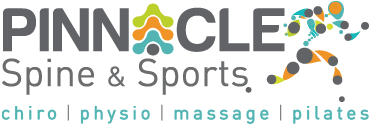The phrase “core stability” is one that gets thrown around a lot by trainers, athletes, therapists and doctors. The average person probably knows that they need good core stability, but may not exactly understand why.
We have all been told we need it and that it will prevent us from hurting our backs, pelvises and necks. Below are the answers to your common questions about Core Stability;
Did we ever have it?
Yes! Core strength is not something foreign that has to be trained to each and every one of us. We all have or had some level of it but usually some of us have got into bad habits (like sustained postures at work) or have had injuries that have gradually weakened it.
What is it?
In the simplest definition, your core is what’s left after you exclude your arms, legs and head. Functionally, it’s your spine, ribs and pelvis and all the muscles attached to them.
Core strength is basically the body’s ability to stabilise the trunk and spine with muscles while moving in any direction. A loss in core strength is when excessive movement/instability is seen within a movement. This can be driven by a gradual process, or can be quite sudden, particularly in the presence of an injury.
Which muscles are our stability muscles?
In regards to core stability, the most important muscles are the diaphragm, transversus abdominis, multifidus, internal and external obliques, and the muscles of the pelvic floor.
Do I need to have a strong core?
By having a strong “core” allows the deep muscles to act like a corset that supports your lower spine, this is especially important during activities such as bending or lifting while digging in the garden, picking up your children, perfecting that golf swing or kicking a football.
Core stability is also important for athletic performance. Anytime you move your arms or legs, your core stabilisers are actually the first muscles to fire. Once your core is stabilised, it becomes a solid foundation for your arm and leg muscles. If you don’t have good core stability, you now have a weak link. You’ll be less efficient and weaker in any arm or leg movements. You are also asking for injuries, as your arm and leg muscles are now being strained more often.
Which exercises are best?
Pilates is one of the most popular and safest forms of exercise that can be used to help develop “core stability”. Many of the Pilates exercises are simple yet challenging. It is suitable for all ages and levels of ability, and overtime as you get stronger the exercises can be progressed in difficulty level.
Is it wise to see a Chiropractor before committing to Core Stability Exercises?
Yes, very often our bodies carry some form of muscle inbalance due to how we have lived our lives. We also may have a long term rotation in the spine due to a slightly shortened leg or an old injury that may have left you weaker or stronger on one side. When attempting to do exercises that require symmetrical controlled movements, a shortened muscle on one side of the back will take all the strain.
We know that the ligaments of the spine only provide stability at the extreme end range of movement. It is the middle and deeper layer muscles which are responsible for the majority of the stabilisation required to keep the back functioning properly.
Exercise – like any therapy – is not without its risks. Any other exercise program may result in pain or injury. To reduce your risk of injury, consult your Chiropractor before beginning any exercise program.
